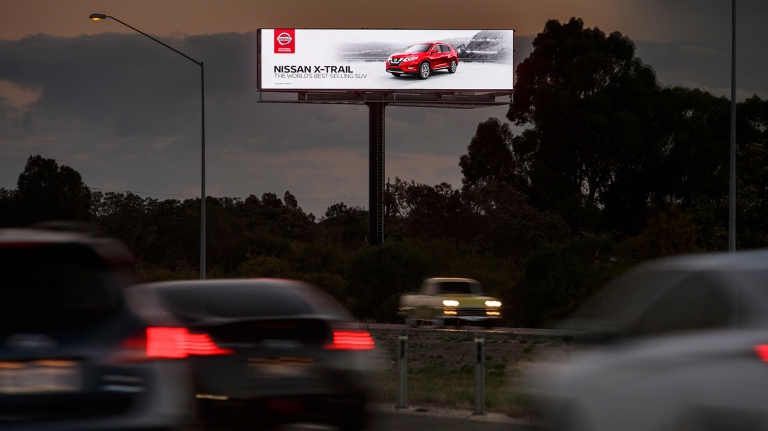
Daktronics Expands “Light Mitigation Technology” To DOOH Ad Displays
October 28, 2022 by Dave Haynes
Daktronics has started marketing “light mitigating technology” that’s intended to help DOOH media companies get on the right side of municipal approvals, particularly if light pollution is raised as an objection by interest groups or individuals.
“In most cases, light mitigation isn’t an issue, but when billboards are placed near housing developments or apartment buildings, businesses who want to be good neighbors can alleviate concerns before it’s an issue,” explains Daktronics OOH Sales Manager Collin Huber. “LightDirect uses strategically placed louvers to limit light output from the side, satisfying regulations for digital billboards as needed.”
The technology is designed to reduce the chances that big LED billboards will light up the living rooms and bedrooms of homeowners and renters who happen to live near a big DOOH display. LightDirect was already being used in Daktronics’ “over-the-road transportation” market for five years, to meet Department of Transportation (DOT) regulations by focusing messages on specific lanes of traffic.
“Daktronics has been in the LED display industry for more than 50 years,” says Daktronics Transportation Project Manager Berniece Stuefen. “We are involved in multiple markets with many different applications; this allows us to share technologies to provide a large basket of product offerings to our customers.”
“We are leveraging our established Transportation technology and adding in the features our OOH customers have come to expect from our digital billboard product line,” says Lori Sieler, Daktronics OOH product manager. “While providing light mitigating properties, LightDirect digital billboards come with an integrated SmartLink, multi-directional light sensor, 400mm standard module size and the same lifetime image quality our products are known for.”
The South Dakota company says it also offers “site-specific light emissions analyses to alleviate concerns about illumination effects. A light analysis depicts what a light meter would measure at all angles and distances if the display was installed at a specific location. Daktronics offers it as a complimentary service with a billboard purchase.”
“It isn’t necessary at every location, but when it’s needed, we look at the size of the billboard, the elevation, surrounding buildings and even the rise and fall of the ground,” says Eric Johnson, Daktronics applications engineer. “Just about every time, concerns are alleviated because of the LEDs we use. We don’t have to sacrifice image quality by modifying the display or blocking LEDs. It’s more important to use components from the start that enable digital billboards to be neighbor friendly.”
Daktronics uses use a multi-directional light sensor to dynamically adjust brightness according to the amount of ambient light – ranging brightness levels from as high as 100% during the sunniest point of the day to 3% during the darkest point of the night.
With seemingly rising opposition to Digital OOH displays based on unnecessary energy consumption in a climate of shortages (in Europe) and more broad opposition to clutter and ads being everywhere, it is probably smart for DOOH media companies and their suppliers to get ahead of reasons local politicians and bureaucrats might not approve digital displays in public spaces. If light pollution and disruption are potential marks against a project, having mitigation tech in place or available makes sense and might keep a project from being derailed. It’s also just a good thing to do, as I can’t imagine having my bedroom invaded by the light from billboards advertising mortgage brokers and injury accident lawyers.
The Toronto-area LED display firm Media Resources also markets a solution it calls Siteline light trespass mitigation, using “Optically Down Angled LEDs to focus light at the intended viewing audience, a custom pixel pattern, and precisely designed face plates to create displays with side angle light blocking.”
There may well be others, but I’m not terribly well-versed in this stuff.



Leave a comment